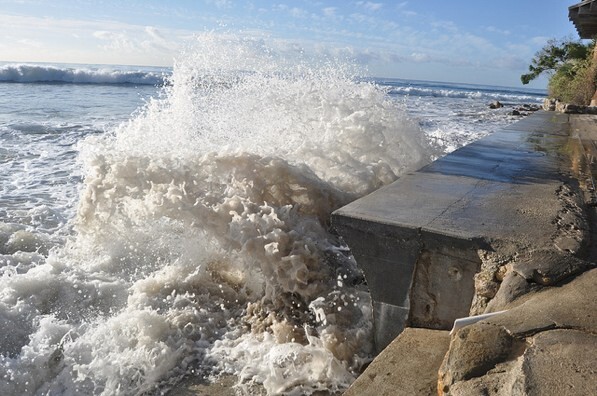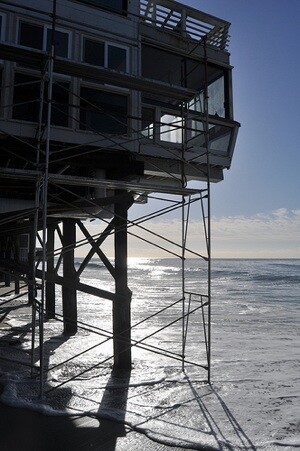As King Tides Hit California's Coast, State Bill Introduced to Address Rising Sea Level

This week California's coast was subject to a phenomenon in which water rises to all-time highs. For environmentalists, these so-called king tides, which are produced by the gravitational pull during a twice-yearly alignment of the moon, Earth and Sun, are exemplifying the possible affects of climate change.
"We've been drawing attention to these tides because they provide an opportunity to experience a taste of how sea level rise will affect Southern California's coast line," said Liz Crossan, Executive Director of Santa Monica Baykeeper. The organization, along with other California Coastkeeper Alliance groups, has been encouraging the public and media to document the results. For example, water has been seen encroaching on homes in Malibu and onto the city streets in San Francisco, both a product of the tides amplified by a strong winter storm currently hitting the state.

On Thursday, when the tides were supposed to be their highest, Santa Monica Assemblywoman Julia Brownley announced she was reintroducing a bill that would require state land grantees to develop and submit plans for avoiding damage (the bill timed out during the last legislative session). AB 752 would affect infrastructure like the ports of Los Angeles and Long Beach, Redondo Beach's King Harbor and the Santa Monica Pier. "The idea behind this particular bill was to put the local governments on notice that the legislature wants them to be studying that, thinking about it and coming up with plans on how to be prepared," explained Curtis Fossum, the Executive Officer of the State Lands Commission. He said that the state has twice now asked for those kinds of plans and found that very few local governments were actually doing anything.
If passed, grantees would have to submit plans -- they would have to include an estimate of the impact's financial cost, as well as propose strategies to prevent or mitigate damage to development and infrastructure -- by July 1st, 2013.
"This legislation brings immediate focus to the climate-change risk facing our public lands," said State Controller John Chiang, who chairs the State Lands Commission. "It will lay out the steps necessary to protect California's infrastructure, its communities, and its all-important coastal economy."
Related: The City of Ventura moves a coastal parking lot and bike path further inland. Read more here.


